Be a 2D shape detective
Shapes are all around us. But how much do you know about them?
Be a shape detective and find out more about 2D shapes.
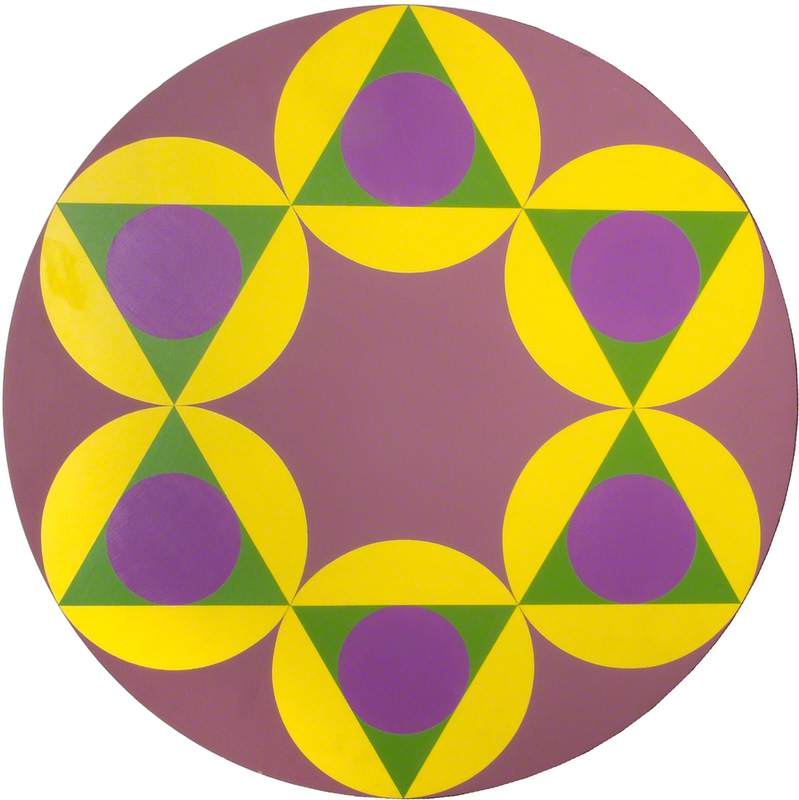
How many sides does a hexagon have? What is the strongest shape? Where can we see shapes around us?
This resource provides an introduction to common 2D shapes and their properties using artworks.
Through whole class discussion and activities students will:
This Maths and Art and Design resource offers a series of teacher-led, whole class or group activities. The questions and discussion suggestions are voiced directly to students, allowing the resource to be easily presented to the class. Teachers' guidance notes are included as well as activity ideas for exploring shapes.
The resource can be used together as a lesson plan or as individual components to integrate into your own scheme of work. It is designed for CfE Level 1 / KS 1 students / National Curriculum Wales Foundation Phase Yrs 1 & 2, but can also be adapted for younger age groups.
Mathematics: Geometry - Properties of shapes
Year 1: Pupils should be taught to recognise and name common shapes, including:
- 2-D shapes [for example, rectangles (including squares), circles and triangles]
Year 2: Pupils should be taught to:
- identify and describe the properties of 2-D shapes, including the number of sides and line symmetry in a vertical line
- compare and sort common 2-D shapes and everyday objects
Mathematics and Numeracy: Shape and space
Pupils should be enabled to:
- sort 2-D shapes in different ways;
- make constructions, pictures and patterns using 2-D shapes;
- name and describe 2-D shapes;
- recognise reflective symmetry;
- explore simple tessellation through practical activities
Art & design
- use a range of processes
Numeracy and mathematics
- I have explored simple 2D shapes and can identify, name and describe their features using appropriate vocabulary (MTH 1-16a)
- I can explore and discuss how and why different shapes fit together and create a tiling pattern with them (MTH 1-16b)
Art and design
- I have the opportunity to choose and explore a range of media and technologies to create images and objects, discovering their effects and suitability for specific tasks (EXA 1-02a)
- I can create and present work using the visual elements of line, shape, form, colour, tone, pattern and texture (EXA 1-03a)
Mathematics: Shapes
Year 1
- recognise and name common 2D shapes (square, triangle, rectangle, circle and semi-circle) in order to begin to compare and sort them
Year 2
- recognise and name regular and irregular 2D shapes, understand and use the properties of shape
Mathematics
Geometry focuses on relationships involving shape, space and position, and measurement focuses on quantifying phenomena in the physical world.
Progression step 2:
– I have explored two-dimensional and three-dimensional shapes and their properties in a range of contexts.
– I have explored reflective symmetry in a range of contexts and I can discuss it as a property of shapes and images.
– I have explored the concept of rotation and I am beginning to use simple fractions of a complete rotation to describe turns.
Expessive Arts
Exploring the expressive arts is essential to developing artistic skills and knowledge and it enables learners to become curious and creative individuals.
Progression step 2:
– I can explore how and why creative work is made by asking questions and developing my own answers.
Responding and reflecting, both as artist and audience, is a fundamental part of learning in the expressive arts.
Progression step 2:
– I can give and accept feedback as both artist and audience.
Creating combines skills and knowledge, drawing on the senses, inspiration and imagination.
Progression step 2:
– I am beginning to apply techniques in my creative work with guidance and direction.
– I am beginning to demonstrate resilience and flexibility in approaching creative challenges.
– I can use creative materials safely and with some control under supervision.
Shapes are all around us. But how much do you know about them?
Be a shape detective and find out more about 2D shapes.
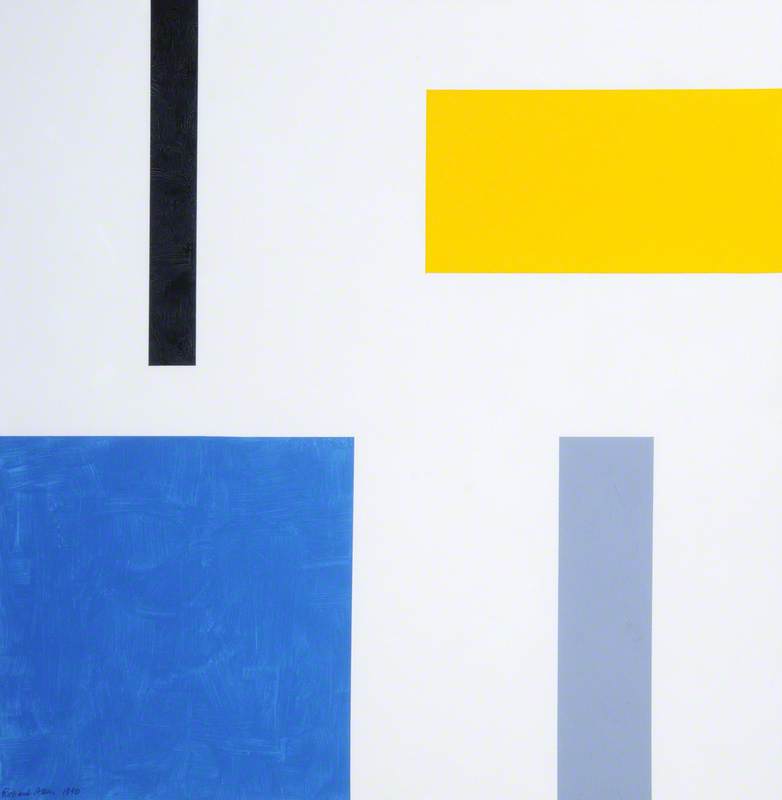
Look at this picture. It is a painting of some shapes. Can you spot a square?
Look at the yellow shape. It looks a bit like a stretched square!
This shape is called a rectangle.
Did you know? If you cut a square in half you get two rectangles.
A square has 4 corners and 4 straight sides. The sides of a square are all the same length.
A rectangle is similar to a square. It also has 4 corners and 4 straight sides. But the sides of a rectangle are not all the same length. A rectangle has 2 long sides and 2 short sides. The sides of a rectangle that are opposite each other are always the same length.
Teacher notes
Point out to students that rectangles can be of different dimensions – as the rectangles in the painting illustrate.
You could demonstrate folding or cutting a paper square in half to show how this makes two rectangles.
You could also show students how, if you fold or cut a square diagonally you get two triangles... to lead into the next section of this resource!
Here is another painting made from shapes. What shapes can you see?
The painting is made of lots of brightly coloured triangles (and bits of triangles). Can you see a yellow triangle? Can you see a green triangle?
Try drawing a triangle in the air with your finger.
Not all triangles look the same. Some triangles have sides that are all the same length, others have sides that are different lengths.
About triangles
Triangles have 3 corners and 3 sides.
Some triangles have sides that are equal in length. These are called equilateral triangles.
Some triangles have 2 sides of the same length and one side that is a different length. These are called isosceles triangles.
Triangles that have sides that are all different lengths are called scalene triangles.
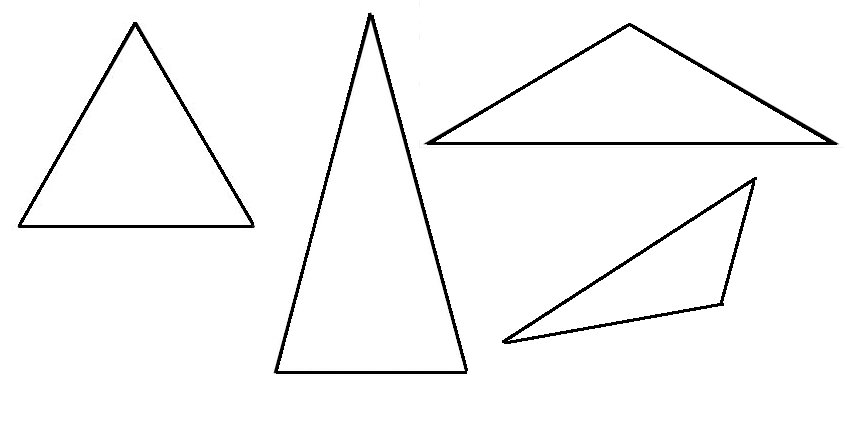
Triangles
Top tip! If a triangle has sides that are all the same length it will look exactly the same if you rotate or turn it once, but a triangle with sides that are different lengths won't.
Teacher notes
Although students don't need to learn the names of the different types of triangles, it is useful for them to understand that triangles are not all the same. You could ask them to point out the different types of triangles on the drawing.
Use a template of an equilateral triangle to demonstrate that when it is rotated 90 degrees it looks the same.
Did you know?
A triangle is the strongest of all the shapes. Objects and buildings that need to be strong, often have triangles in their structure.
Can you see some shapes with lots of sides and lots of corners?
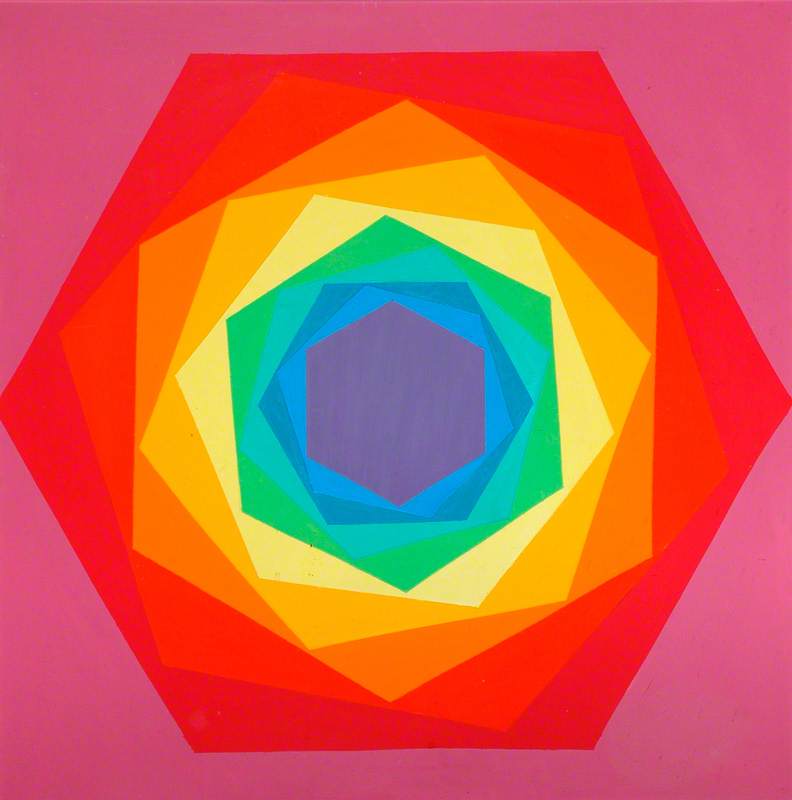
© the artist's estate. Image credit: The University of York
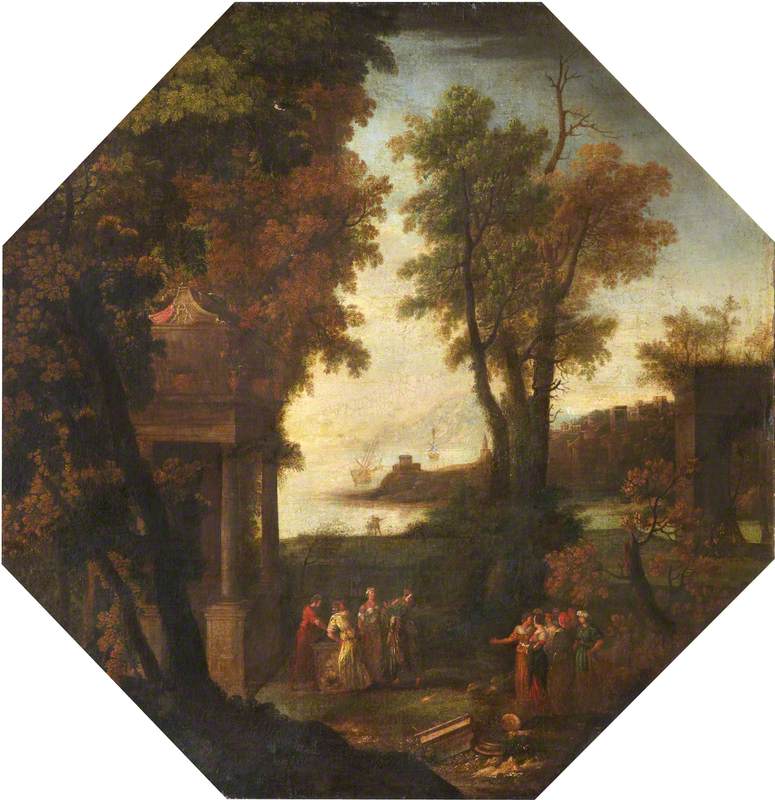
Image credit: University of Edinburgh
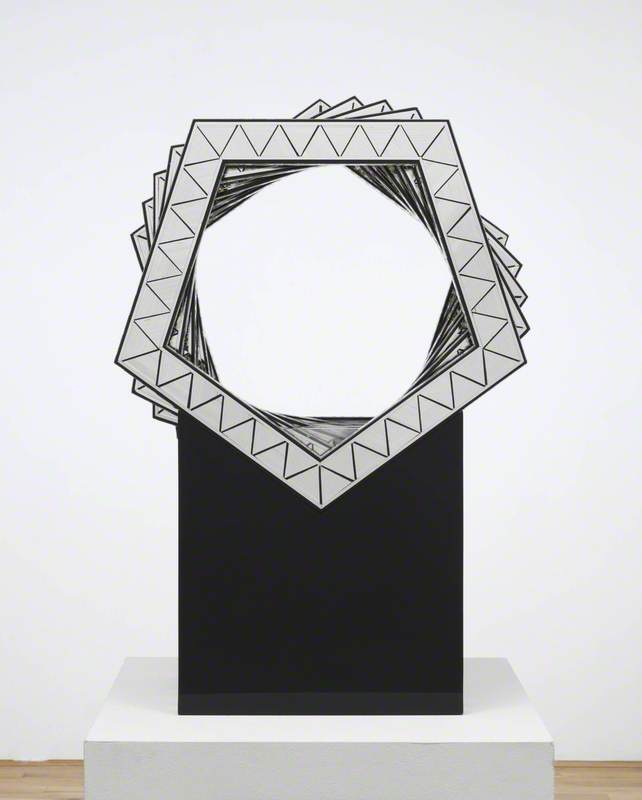
© the artist's estate, courtesy of James Cohan Gallery, New York. Image credit: Tate
Can you work out what they are?
Here are some clues...
Did you know?
The black and white pattern on a football is made from pentagons and hexagons.
Look at this sculpture of a football.
Top tip! Count the sides of the shapes to find out what they are.
The honeycombs where bees store their honey are made from lots of hexagon-shaped cells.
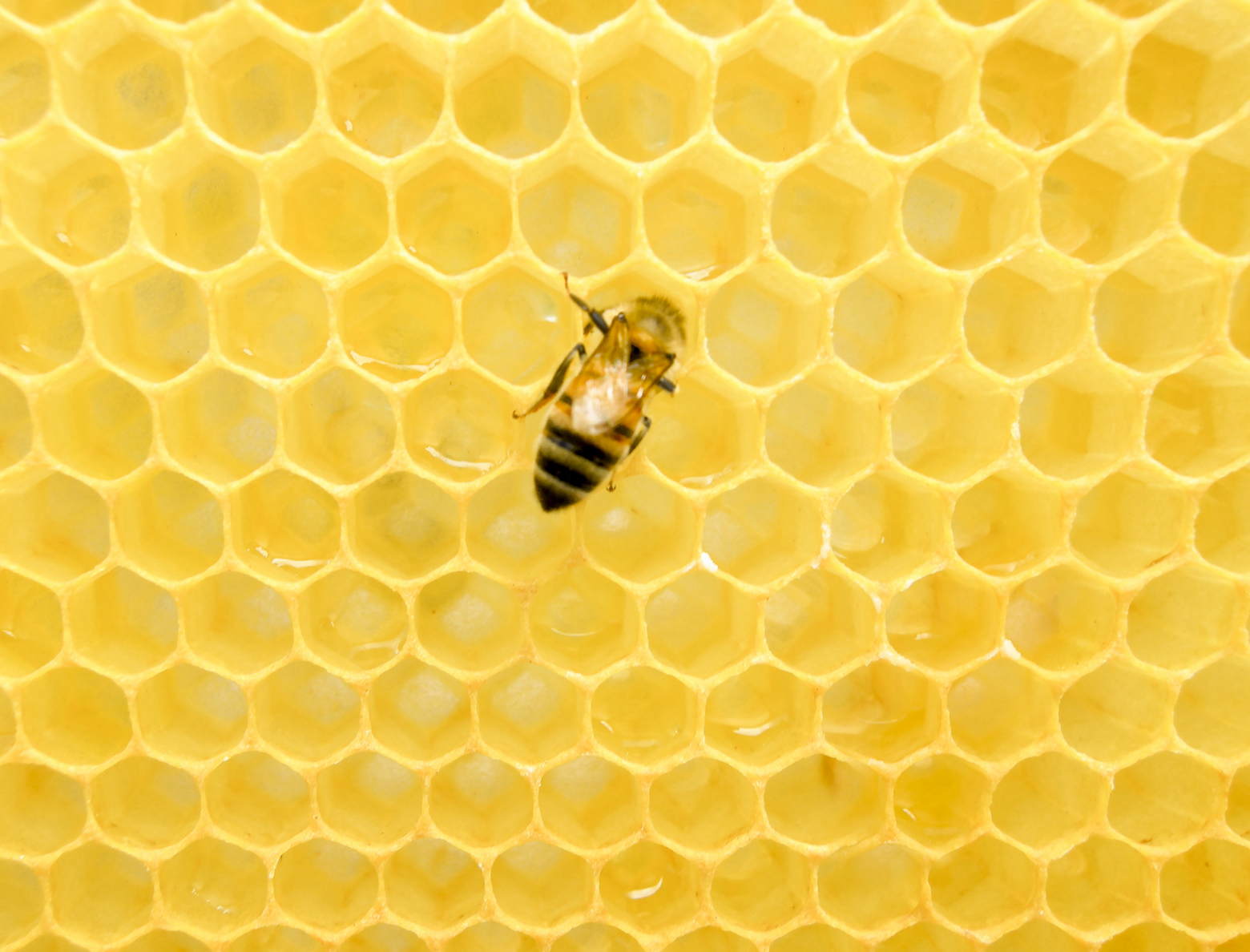
Image credit: Matthew T. Rader, matthewtrader.com, CC BY-SA 4.0 (source: Wikipedia Commons)
Western honey bee on a honeycomb
You might spot an octagon on your way home from school...!
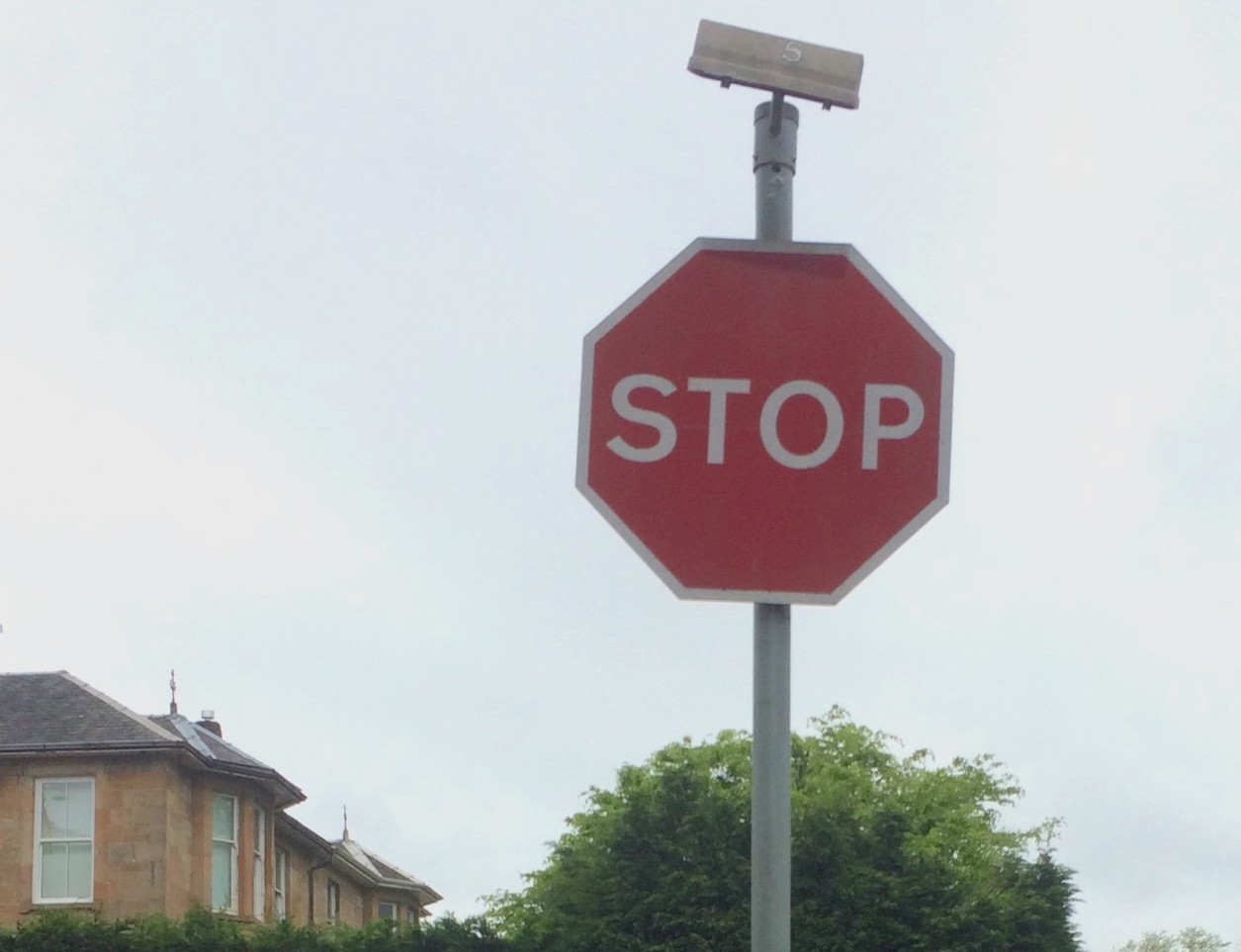
Stop sign
Circles are all around us.
About circles
All the shapes we have looked at so far have straight lines, but circles are made from a curved line and have no corners.
They also only have one side. All the other shapes we have looked at have 3 or more sides.
Semi-circles
If you cut a circle in half, you get a very different shape called a semi-circle.
This sculpture was made by an artist called Barbara Hepworth. It is made of two semi-circles with circles inside the semi-circles. (Barbara Hepworth often added circles to her sculptures.)
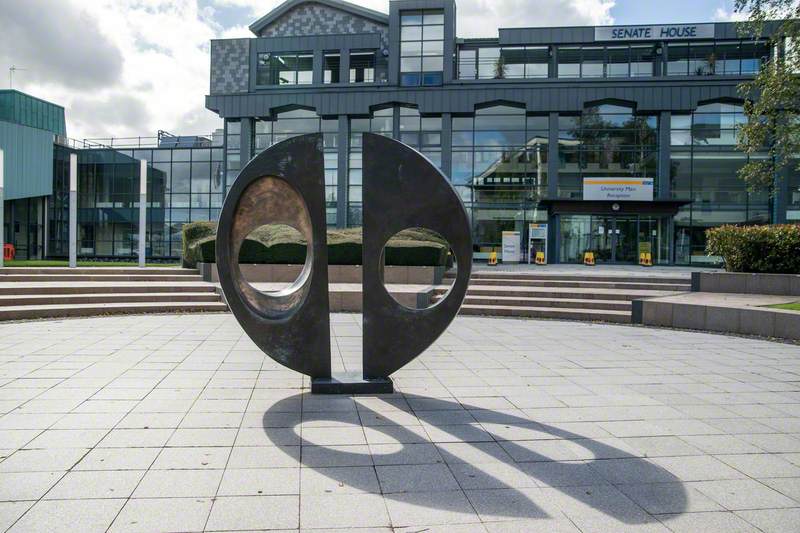
© Bowness. Image credit: Janet Broughton / Art UK
Two Forms (Divided Circle) 1969
Barbara Hepworth (1903–1975) and Morris Singer Art Foundry Ltd (founded 1927)
Deane Road, Bolton, Greater Manchester
About semi-circles
A semi-circle is half a circle. It is different from a circle because it has 2 sides – a straight side and a curved side. It also has 2 corners, while a circle has no corners.

Circles and semi-circles
If you draw a line down the centre of a circle, the two halves are exactly the same.
Shapes that have two identical halves are symmetrical shapes.
Have a look at these 2D shapes. Imagine drawing a line down the centre of them from the top to the bottom.
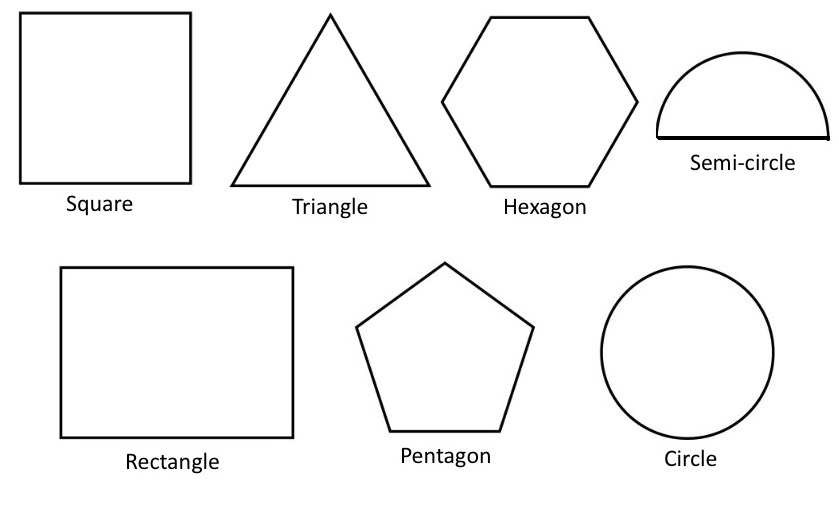
2D shapes
All of these shapes have a vertical line of symmetry. (A vertical line is a straight line that goes up and down.)
Now imagine drawing a line through the middle of each shape from side to side. (A line that goes from side to side is called a horizontal line.)
Teacher notes
It may be helpful to fold paper shape templates in half to illustrate the vertical and horizontal lines of symmetry.
For more advanced students you could also introduce the idea of multiple lines of symmetry.
As a class, look through the artworks in the slideshow below and ask your students to find 2D shapes.
You could approach the challenge as an 'I spy' game.
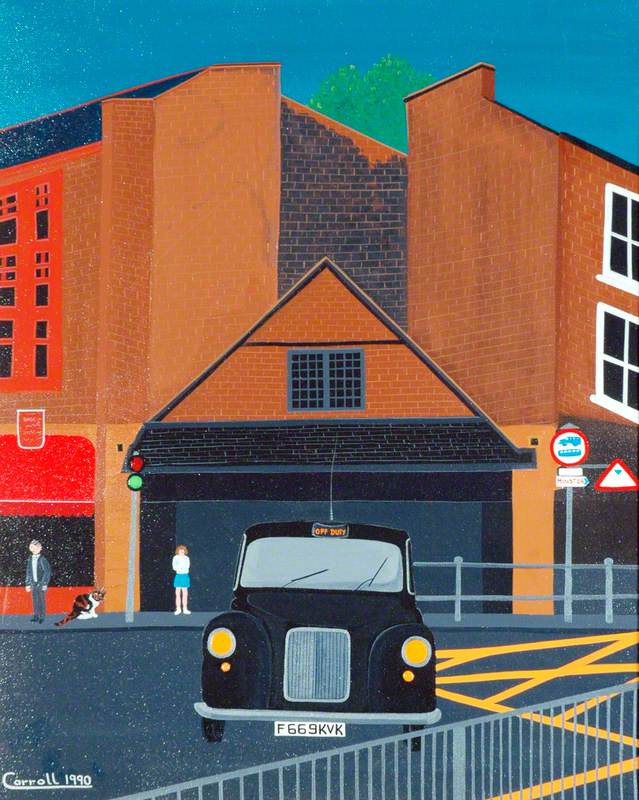
© the copyright holder. Image credit: The Mansion House and Guildhall
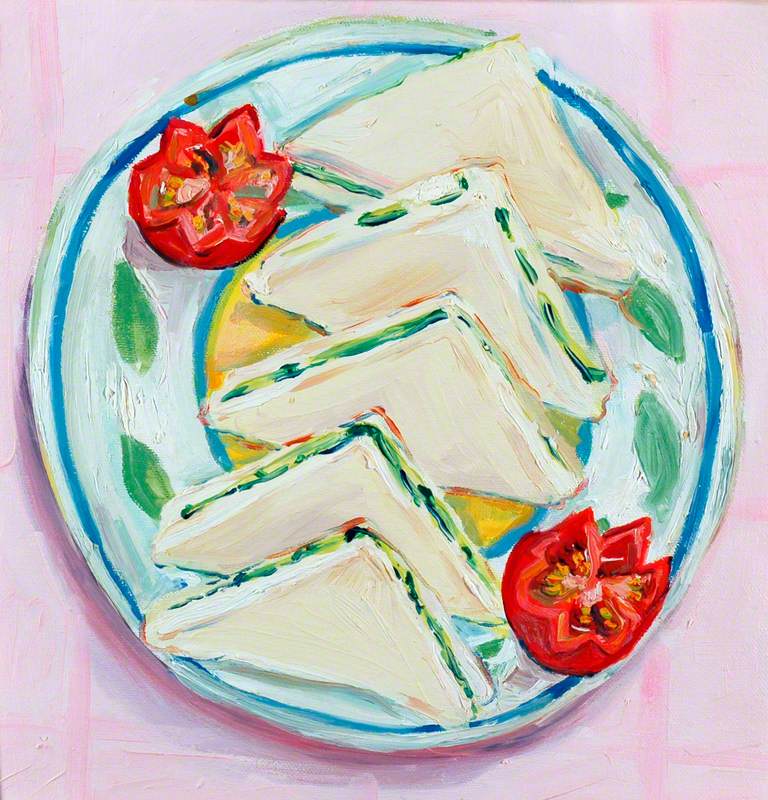
© the artist. Image credit: North Yorkshire Library and Information Services
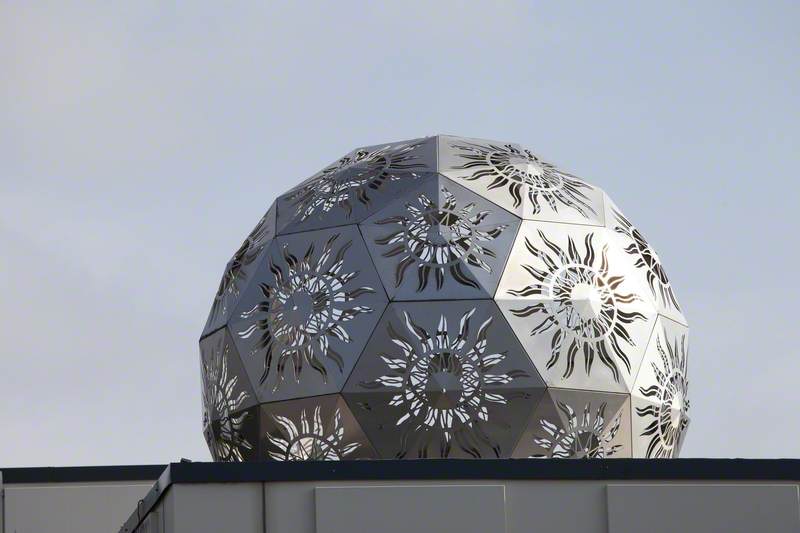
© the copyright holder. Image credit: Jane Bradford / Art UK
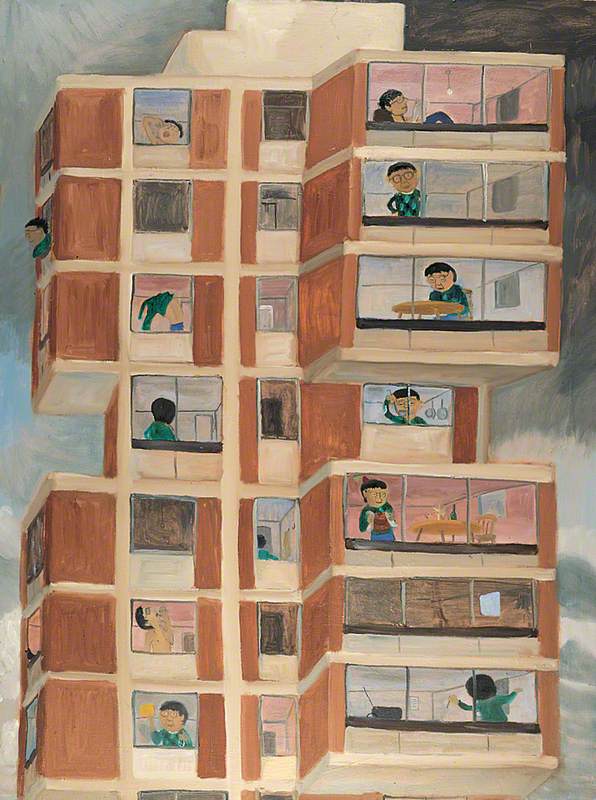
© the artist/courtesy Flowers Gallery, London and New York. Image credit: Museum of London
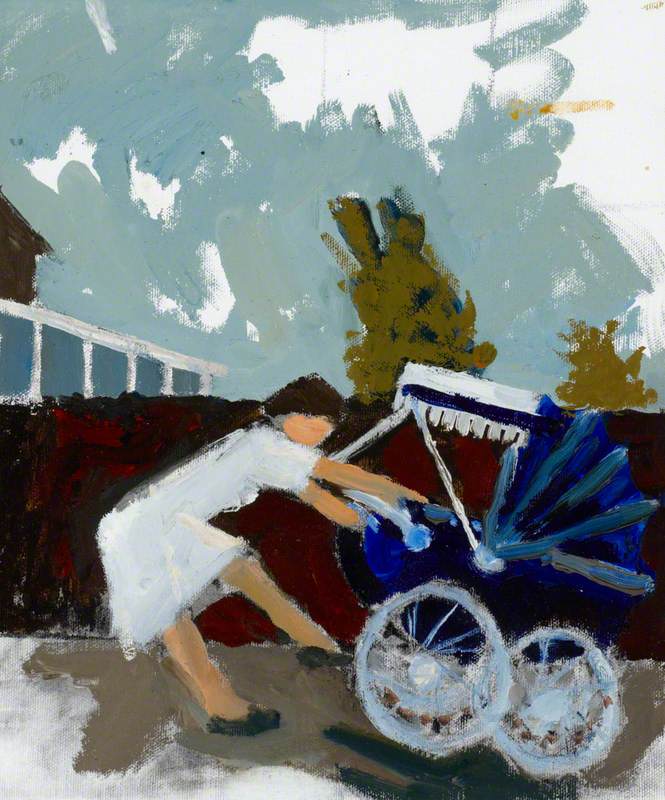
© the artist. Image credit: Bromley Historic Collections
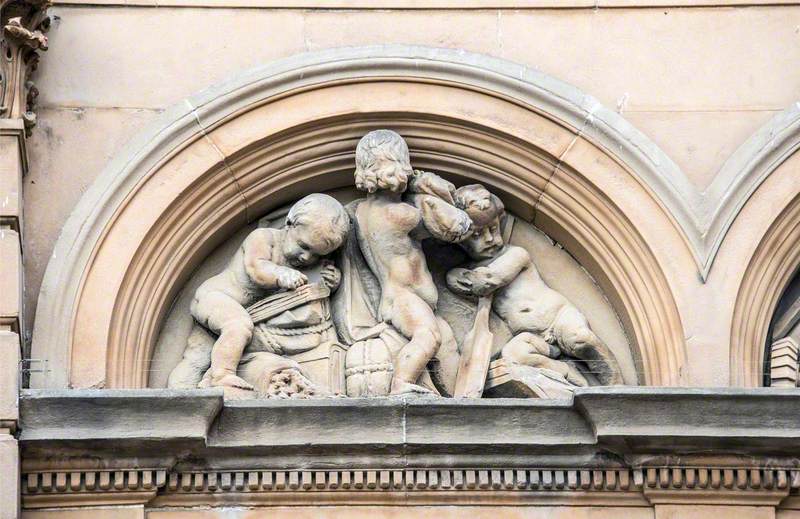
Image credit: Gordon Baird / Art UK
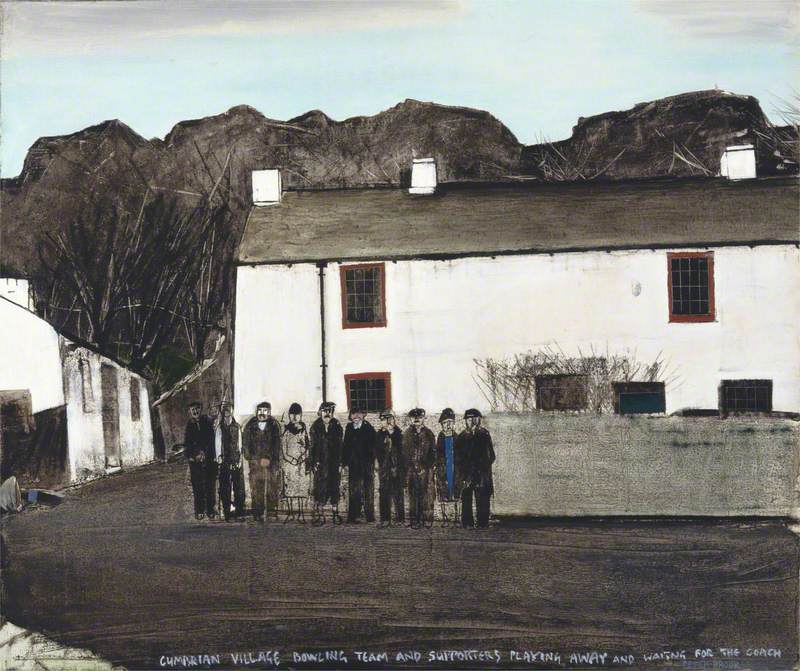
© the artist's estate. Image credit: Yale Center for British Art
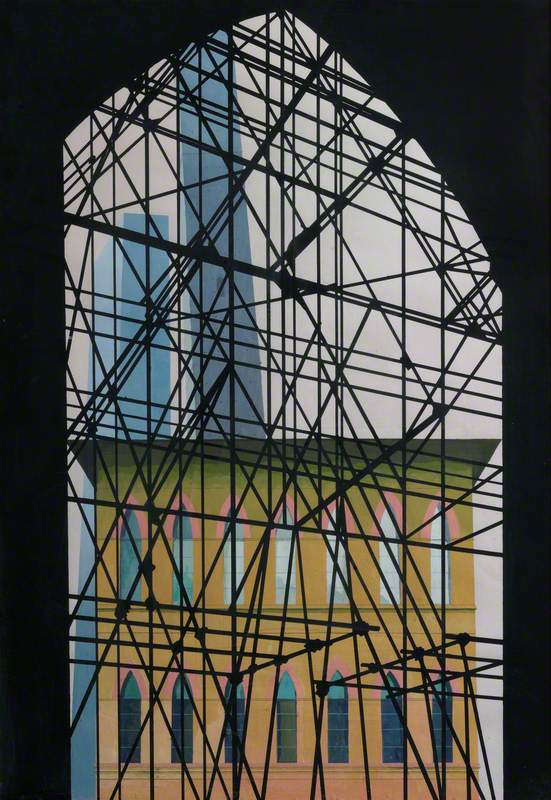
© the copyright holder. Image credit: Clare Hall, University of Cambridge
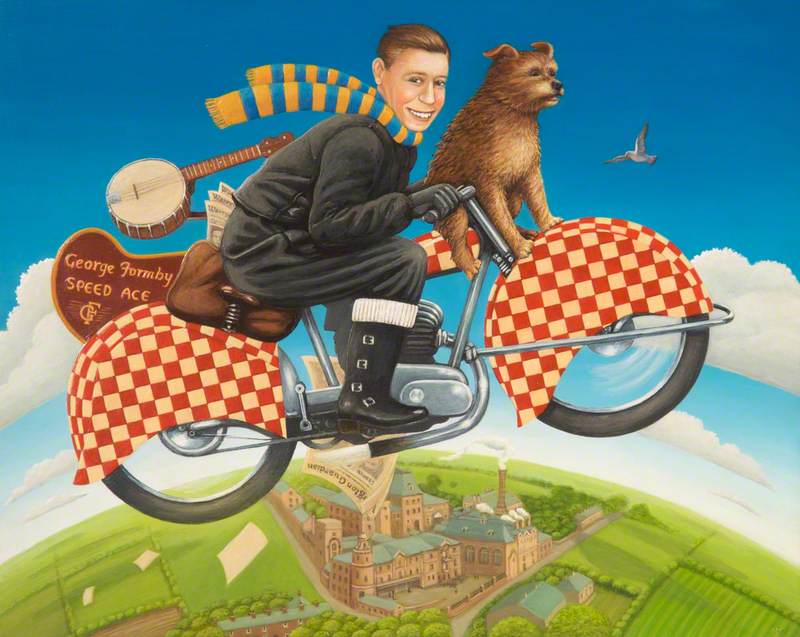
© the artist. Image credit: Warrington Museum & Art Gallery

Task your students to work in pairs or small groups and find shapes around the classroom. Students could either:
In advance of the lesson, you may want to make sure that there are examples of shapes around the classroom and supplement them with extra objects that include shapes as necessary!
Set a time limit of 5 minutes.
Before the lesson
Prepare shape templates for students to draw around (squares, rectangles, circles, triangles, etc.).
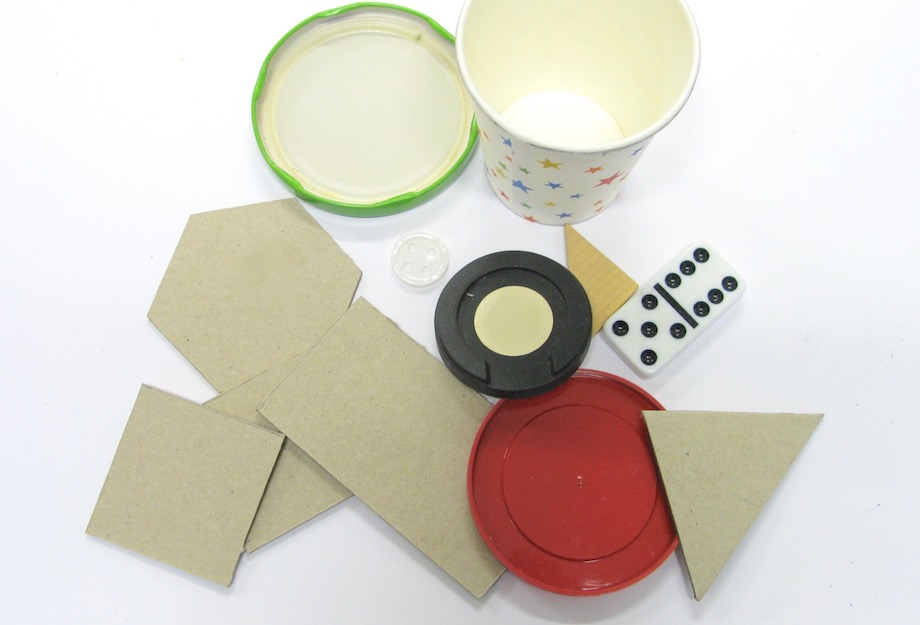
Shape templates
You could either make card templates or collect objects such as bottle tops or jar lids, tin cans, dominoes, etc. – anything that has a circular, square or rectangular face. (Objects with triangular, hexagonal, octagonal and pentagonal faces may be harder to find so you may need to make these templates!)
In this resource, we have looked at lots of paintings, prints and drawings. Many of these are abstract artworks made from geometric shapes.
Task your students with making an abstract picture or pattern using the shape templates.
(For more detailed activity instructions, see the Art UK activity: Make a 2D artwork from abstract shapes.)
Be inspired by more abstract pictures and patterns made using shapes, on Art UK:
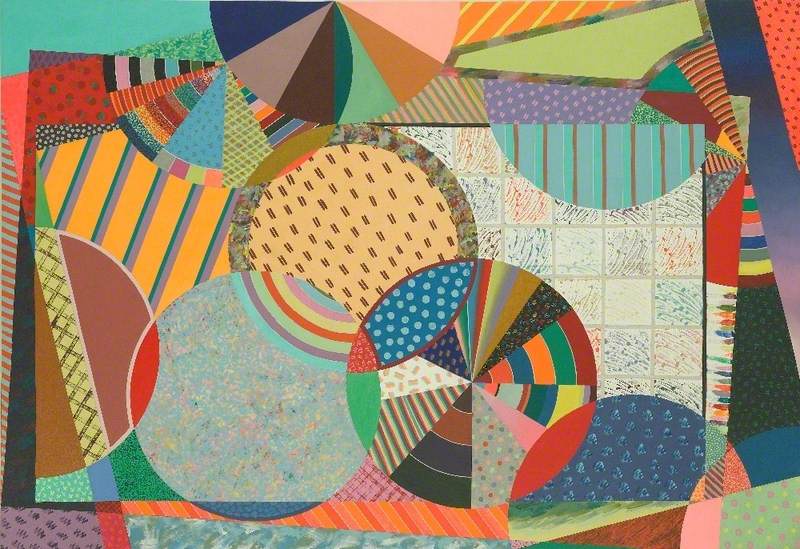
© the artist's estate. Image credit: Arts Council Collection, Southbank Centre, London
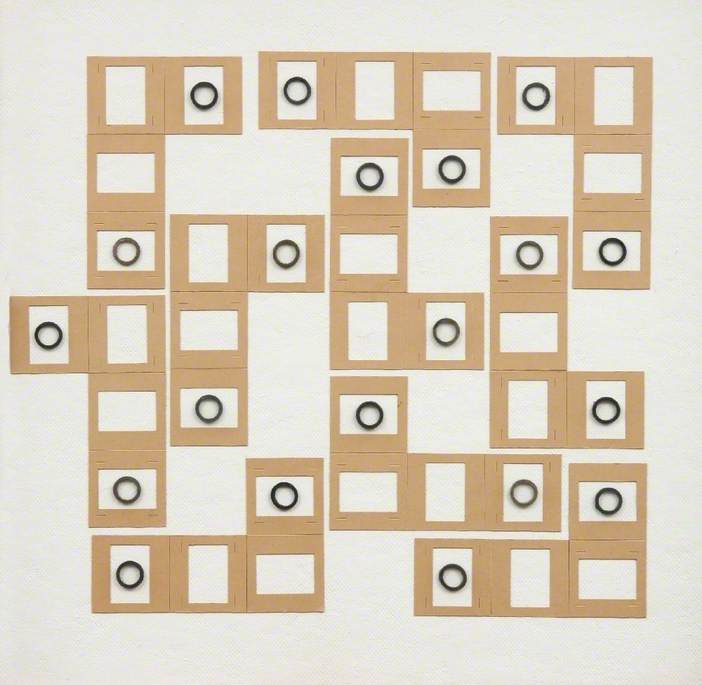
© the artist's estate. Image credit: Cornwall Council
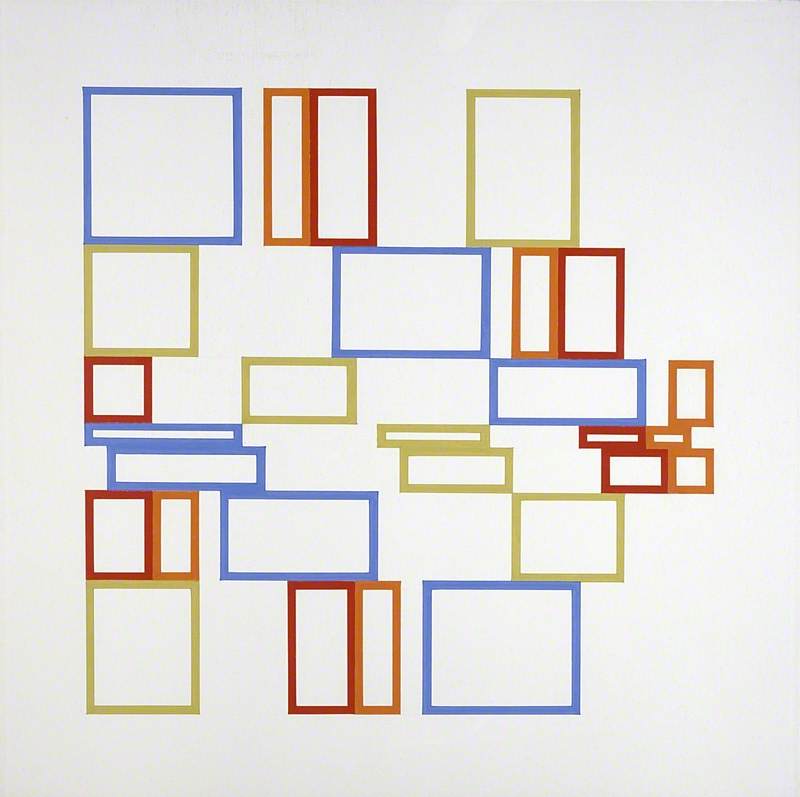
© the artist's estate. Image credit: Ashmolean Museum, Oxford
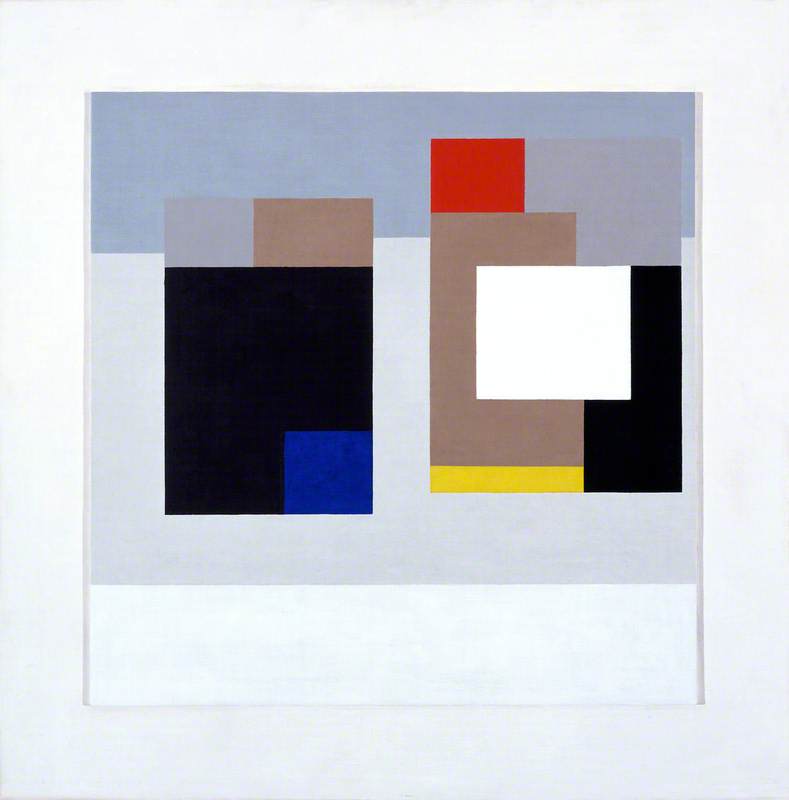
© the estate of Angela Verren Taunt. All rights reserved, DACS 2025. Image credit: Amgueddfa Cymru – National Museum Wales

© The Estate of Anwar Jalal Shemza. All rights reserved, DACS 2025. Image credit: Tate
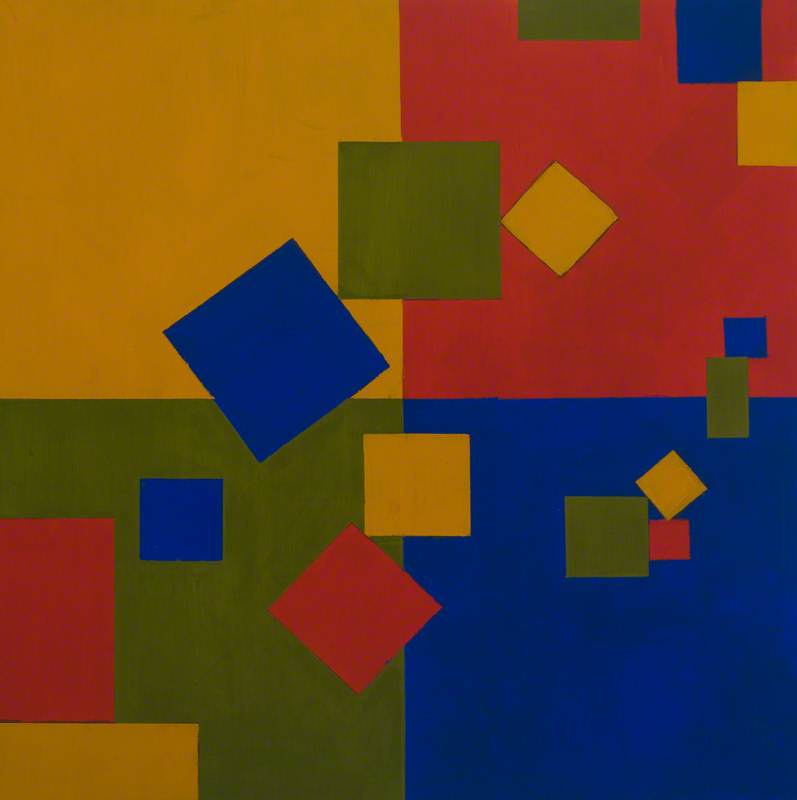
© Wilhelmina Barns-Graham Trust. Image credit: Wilhelmina Barns-Graham Trust
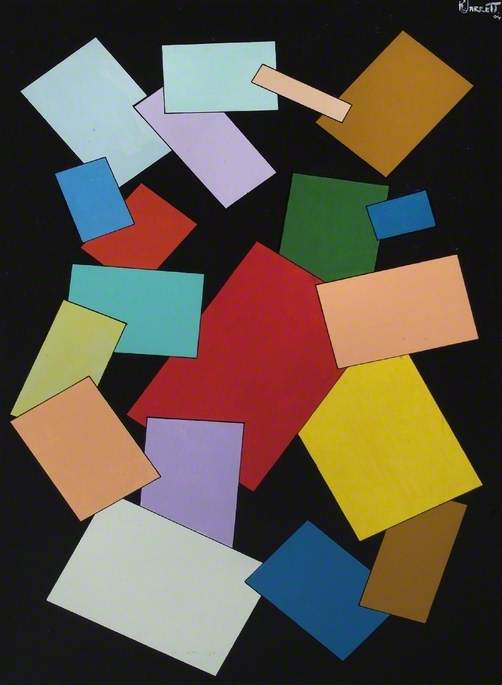
© the copyright holder. Image credit: Oxford University Hospitals NHS Foundation Trust
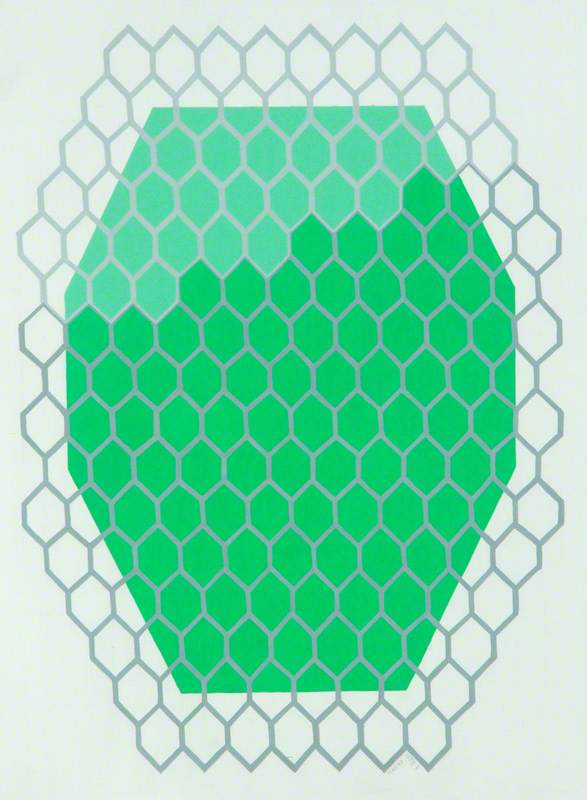
© the artist's estate/ the Colour Museum. Image credit: SDC Colour Experience
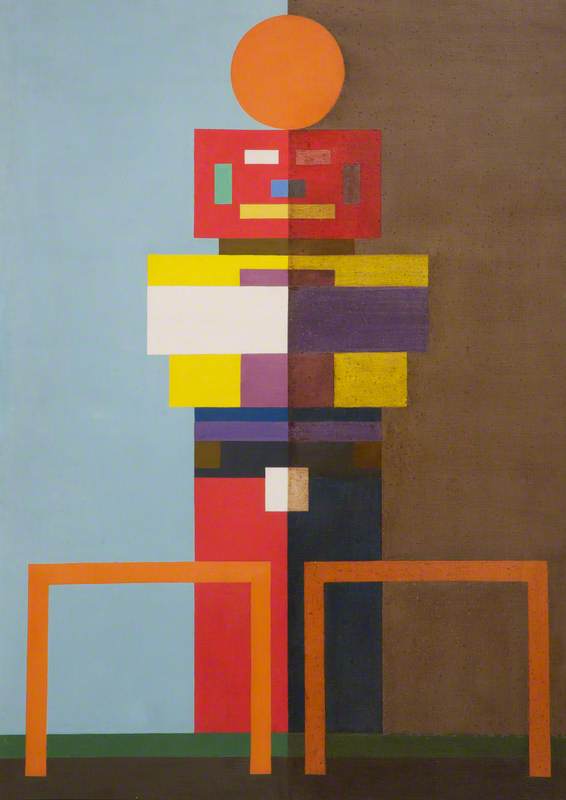
Artist Ithell Colquhoun has used simple shapes to create a robot-like football player (with a football on its head and goalposts at its feet).
Using shape templates, task your students with making a simple robot picture using shapes. (It could be a humanoid or animal-shaped robot.)
Ithell Colquhoun was associated with the Surrealist movement, so encourage your students to be as surreal as they like with their shape robots!
For more detailed activity instructions (and more 2D shape robot ideas) take a look at the Art UK activity: Make a robot from 2D shapes.
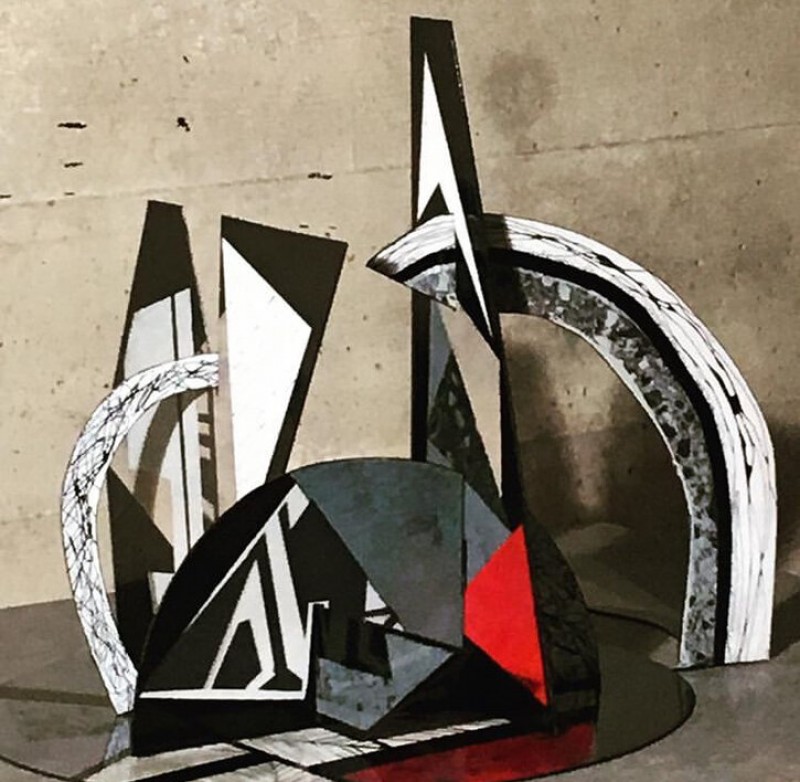
Beauty Chorus G. vitreous enamelled steel by Lisa Traxler. © the artist. Image credit: Lisa Traxler
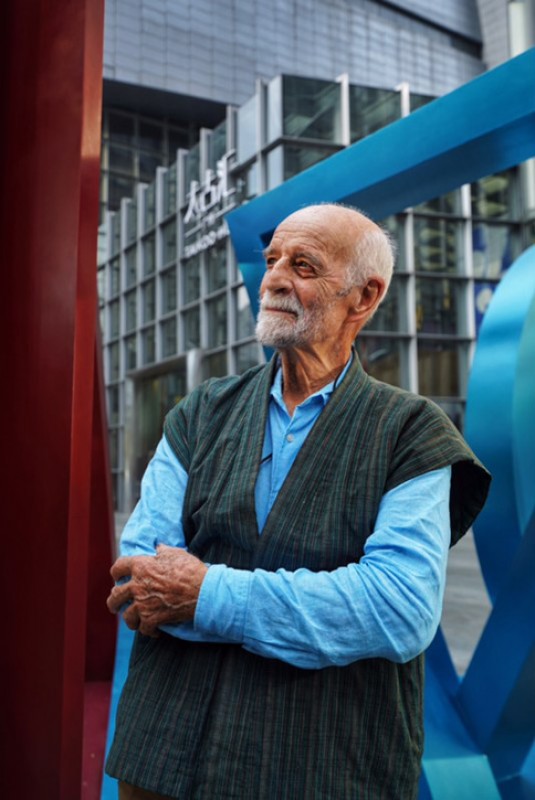
Phillip King, 2019. Image credit: Judy Corbalis, courtesy of Thomas Dane Gallery
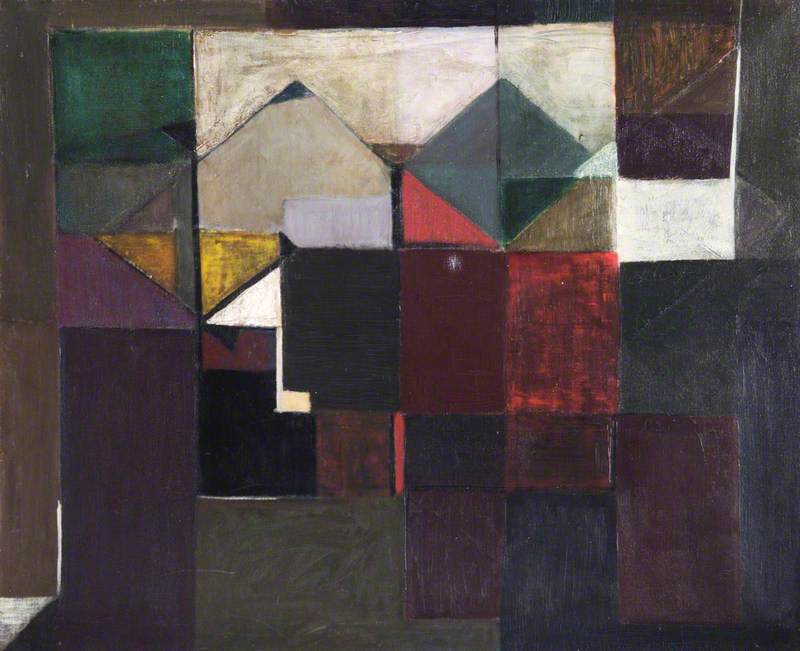
© estate of Terry Frost. All rights reserved, DACS 2025. Image credit: Leamington Spa Art Gallery & Museum
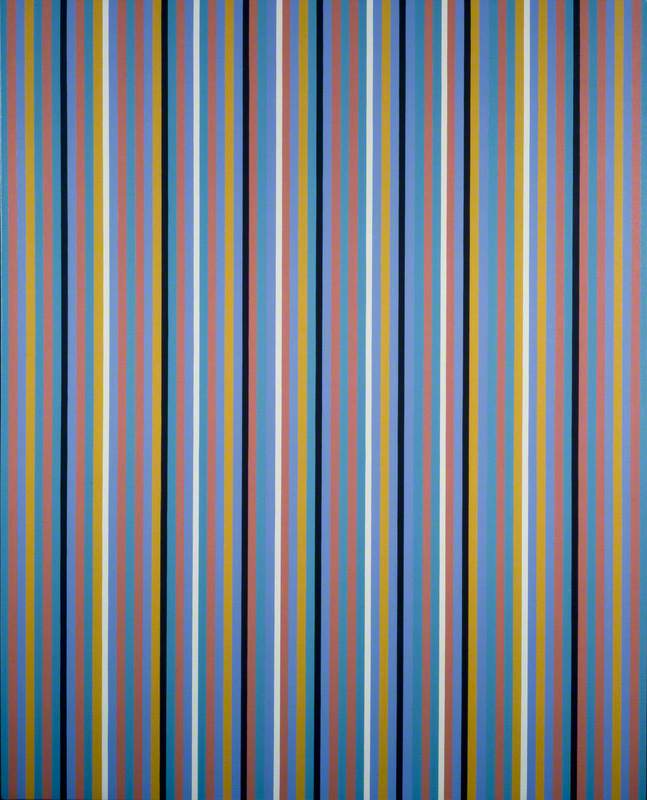
© courtesy the artist and Karsten Schubert, London 2011. Image credit: Norfolk Museums Service
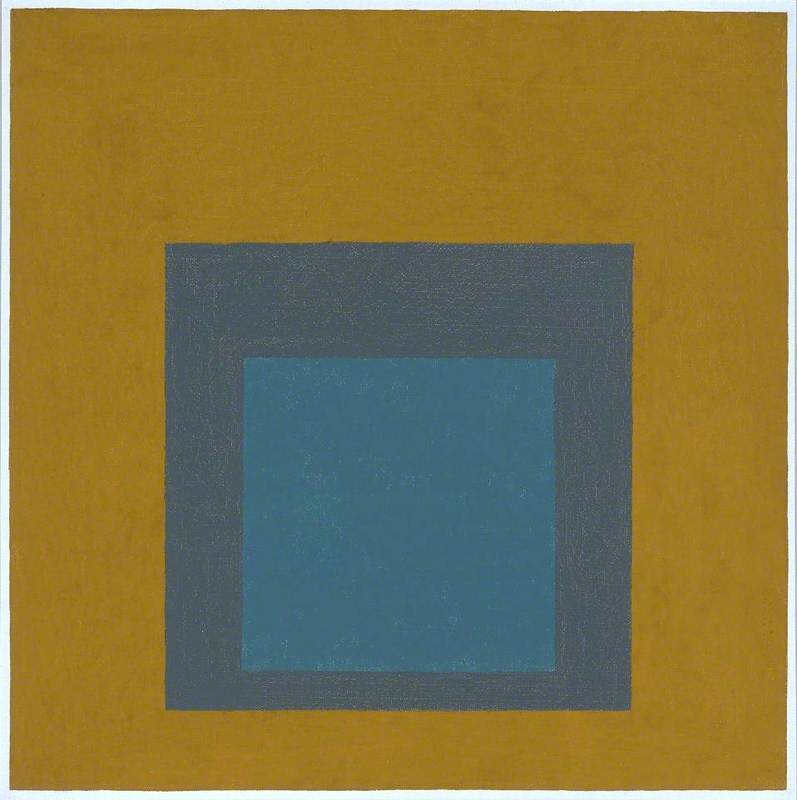
© The Josef and Anni Albers Foundation/VG Bild-Kunst, Bonn and DACS, London 2025. Image credit: Tate
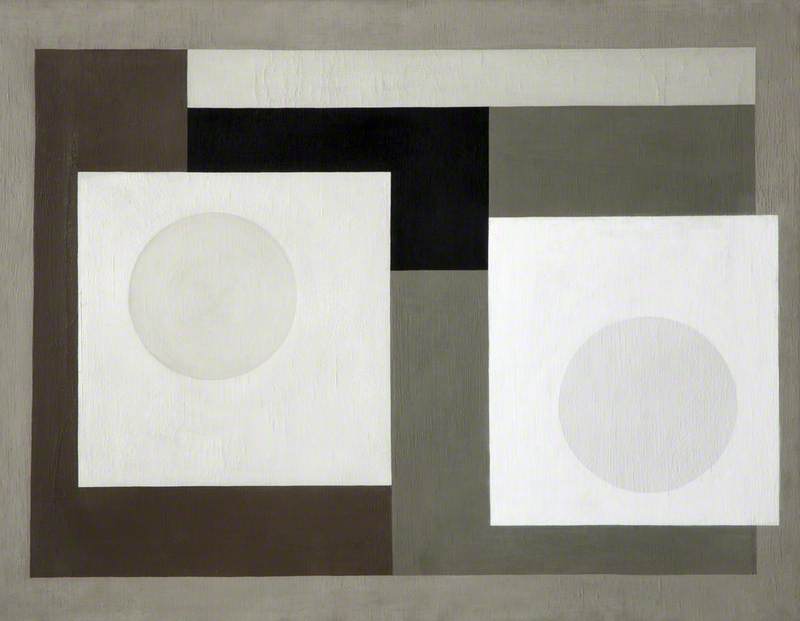
© the estate of Angela Verren Taunt. All rights reserved, DACS 2025. Image credit: National Museums NI